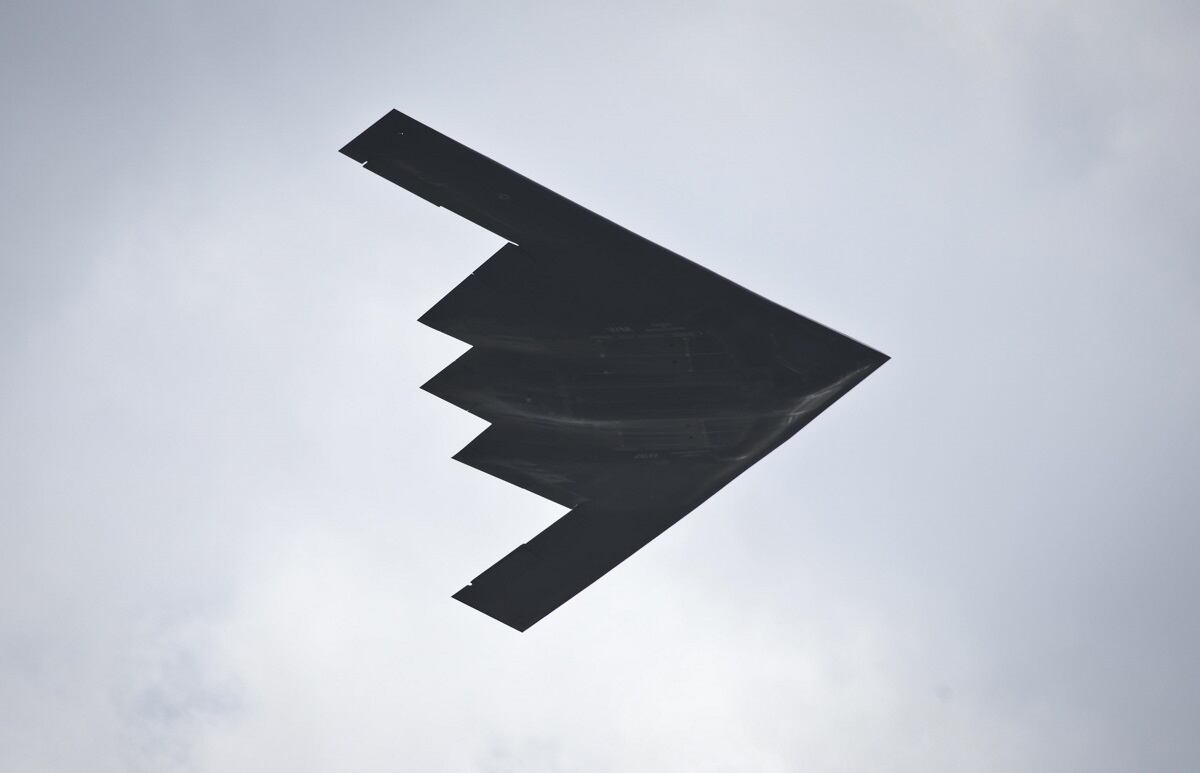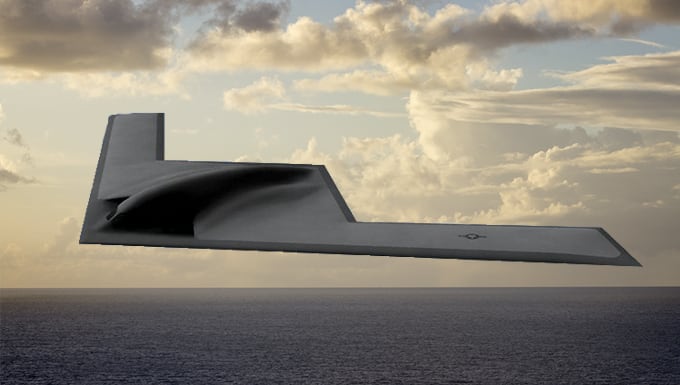WHITEMAN AIR FORCE BASE, Mo. — By the mid 2020s, Boeing’s new T-X trainer will begin to replace the aging T-38s flown by fighter and bomber pilots going through advanced training. But the U.S. Air Force hasn’t decided whether to buy enough T-X jets to replace the T-38s used to supplement flying hours for the B-2 stealth bomber.
At Whiteman Air Force Base in Missouri, the T-38 is flown regularly by B-2 bomber pilots as practice for basic flying fundamentals. Only 21 B-2s were ever built, and the plane requires intensive maintenance, making training in the T-38 an imperative for keeping up pilots’ flight currencies and for cutting costs.
RELATED

Whiteman’s 13th Bomb Squadron owns 14 T-38s, said Capt. Keenan Kunst, spokesman for the 509th Bomb Wing. Those training jets are “generally about 50 years old,” with the oldest of the planes built in 1964, the officer added.
But despite the T-38’s age, there are no plans to replace Air Force Global Strike Command’s T-38s with the T-X, said Uriah Orland, an AFGSC spokesman.
To further complicate matters, the Air Force is grappling with the size and shape of its future bomber force. Last year, it announced it would retire its B-1B and B-2 bombers by the mid 2030s as the new B-21 Raider was fielded. However, new analysis by the service and other think tanks indicated that the Air Force will need far more bombers than previously projected, putting existing plans in question.
RELATED

During an April roundtable with reporters, Gen. Timothy Ray, head of Air Force Global Strike Command, said the service’s course of action is to wait and see rather than draw up a new bomber road map.
“I agree philosophically with the need to grow,” he said. “My job, right now as I see it, is to keep as many options on the table as I possibly can. The real decisions about the change in the bomber footprint, those are going to happen well after my time.”
Click here for more from the special report on the U.S. nuclear enterprise.
This uncertainty about the B-2′s future — and thus the future of the T-38 as its companion trainer — doesn’t seem to be much of a problem, at least in the short term.
Kunst said that mission-capable rates for the aircraft are “generally good” and that it “performs its role well” as a companion trainer for the B-2.
“The age of the aircraft does present issues, as some parts simply are not made any more,” he acknowledged. “However, the Team Whiteman T-38A maintenance professionals meet these challenges and keep these aircraft flying, meeting the needs of our B-2 schoolhouse. As far as I know, the T-38 remains one of the safest supersonic aircraft of all time.”
The vast majority of students learning to fly the B-2 at Whitman are seasoned pilots with years of flying experience in other platforms, including the T-38. However, the Air Force has accepted new pilots directly from undergraduate pilot training on two occasions, the last time in 2005, Kunst said.
Those pilots will spend “about two and a half years” in the T-38 “before they ever touch a B-2,” said Maj. Kyle Harrington, a T-38 and B-2 instructor pilot at the 13th Bomb Squadron.
The B-2 and T-38 couldn’t be further apart in terms of the aircraft’s composition and purpose — and that’s kind of the point, Harrington said in an interview with journalist and Defense News contributor Jeff Bolton during a visit to Whiteman AFB.
“The B-2 [is a] highly advanced, highly automated airplane,” Harrington said. Meanwhile, there’s “not a single computer” in the T-38. “That’s why we fly it, though, because it’s all stick, rudder, throttle. It keeps our skills, as far as flying, up to speed.”
During a B-2 flight, the pilot’s full concentration must be on the bomber’s mission computers and sensors that provide important cues.
“Flying has almost got to be secondary and natural,” Harrington said. Because the T-38 is “pretty difficult to fly,” it ensures that basic flying skills don’t atrophy.
A trained B-2 pilot will spend anywhere from 10-15 hours flying the B-2 in a month, with about six additional hours in the T-38 cockpit, Kunst said. Pilots still going through the schoolhouse spend more time flying the T-38.
So far, the Air Force has committed to buying 351 T-X jets for Air Education and Training Command’s requirements. However, its contract with Boeing includes options that could bring the total order up to 475 aircraft, creating an easy lever for the Air Force to pull if it decides to buy new T-Xs for Air Force Global Strike Command.
When Air Force Global Strike Command decides to replace the T-38, the T-X will be seen as “far and away” the best choice due to its modern avionics and cockpit, said Rebecca Grant, a military analyst with IRIS Independent Research. That might enable the B-2 pilots to do more of their tactical training in the B-2.
“Of course, the main function of the T-38s is to keep flying skills fresh, and T-X will do that well also, but the T-X will have that fifth-gen cockpit feel, and that will be of extra value to the B-2 community,” she said.
Another advantage is the inherent safety of moving to a newer airframe.
“Commanders won’t be worrying about an ancient aircraft at the base with a very precious crew force. I think the load off the wing commander’s mind will be significant when that comes along,” she said.
Defense News partnered with independent journalist and long-time radio personality Jeff Bolton for a multimedia report that takes an up-close look at the U.S. nuclear enterprise by way of Bolton’s exclusive flights on military strike platforms and interviews with the leadership and military staff that support nuclear operations and missions.
Valerie Insinna is Defense News' air warfare reporter. She previously worked the Navy/congressional beats for Defense Daily, which followed almost three years as a staff writer for National Defense Magazine. Prior to that, she worked as an editorial assistant for the Tokyo Shimbun’s Washington bureau.







